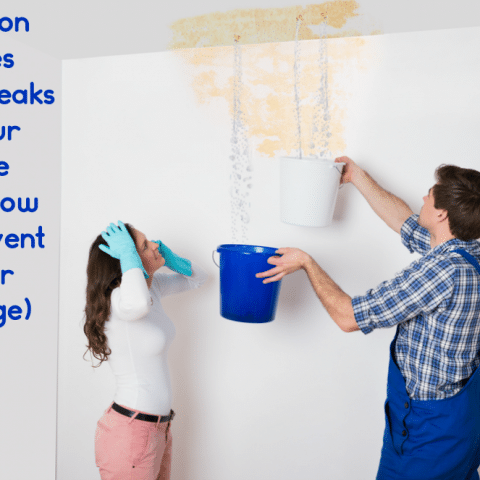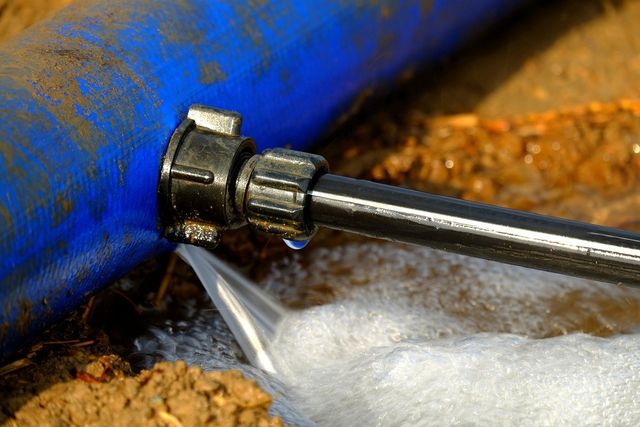Overview To Water Leakage Discovery In The House
Overview To Water Leakage Discovery In The House
Blog Article
What're your opinions on Locating water leaks?

Early detection of leaking water lines can minimize a possible disaster. Some tiny water leaks might not be visible.
1. Take A Look At the Water Meter
Every house has a water meter. Checking it is a proven manner in which aids you find leaks. For beginners, turn off all the water sources. Ensure no one will flush, make use of the faucet, shower, run the washing maker or dishwasher. From there, most likely to the meter and watch if it will change. Given that no one is using it, there should be no motions. That suggests a fast-moving leak if it relocates. Similarly, if you discover no changes, wait a hr or two as well as check back once more. This implies you may have a slow leakage that can also be below ground.
2. Check Water Intake
Assess your water costs and also track your water intake. As the one paying it, you ought to discover if there are any disparities. If you find sudden changes, regardless of your consumption being the same, it indicates that you have leakages in your plumbing system. Bear in mind, your water costs should drop under the same array every month. An unexpected spike in your expense suggests a fast-moving leakage.
On the other hand, a steady increase each month, despite having the exact same practices, shows you have a slow-moving leak that's additionally slowly intensifying. Call a plumber to completely examine your home, particularly if you feel a cozy location on your floor with piping underneath.
3. Do a Food Coloring Examination
When it comes to water consumption, 30% comes from toilets. If the color somehow infiltrates your dish during that time without flushing, there's a leakage between the container and dish.
4. Asses Exterior Lines
Don't neglect to check your outside water lines as well. Examination faucets by attaching a yard pipe. Must water seep out of the connection, you have a loose rubber gasket. Replace this and ensure all connections are tight. It will certainly help get it professionally checked out and also preserved each year if you have actually got a lawn sprinkler system. One tiny leakage can waste tons of water as well as increase your water bill.
5. Inspect and also Analyze the Scenario
Homeowners must make it a habit to inspect under the sink counters and also also inside cabinets for any kind of bad odor or mold and mildew development. These two warnings indicate a leakage so prompt interest is called for. Doing regular assessments, also bi-annually, can conserve you from a major issue.
If you recognize your residence is already old, maintain a watchful eye on your heating systems, hose pipes, pipes and so on. Look for discolorations and compromising as many pipelines and also devices have a life expectancy. They will likewise normally wear away as a result of wear and tear. Do not wait for it to escalate if you presume dripping water lines in your plumbing system. Call a professional plumber today so you don't end up with a horrible mess in your house.
Early detection of dripping water lines can alleviate a possible catastrophe. Some tiny water leaks might not be visible. Examining it is a proven way that helps you uncover leakages. One little leak can squander tons of water and spike your water bill.
If you presume dripping water lines in your plumbing system, do not wait for it to intensify.
How to Know If Your Home Has a Hidden Leak
Water Meter Reveals Inexplicable Water Usage
If you’d like to test whether or not there’s a leak somewhere in your home, you can do this using your water meter. Here is how to conduct the test:
Don’t use any water in your home for at least 30 minutes; this also means not turning on faucets or water-using appliances.
Go outside, and check your water meter for activity.
If your water meter shows that there was activity, even though no one was using any water, this proves that there is a leak in your home.Visible Mold or Mildew Growth
Leaks behind walls create moist, dark environments that allow mold and mildew to grow and thrive. Eventually, you might see mold growth forming on the wall closest to a hidden leak.
If mold is growing in an area that receives a high amount of moisture, such as a bathroom, it may simply be an indication that better ventilation is needed. However, if you see mold growth on a wall or the ceiling in an area where you would not expect, you probably have a hidden leak.
Musty, Mildew Odor
Sometimes you might not be able to see the mold or mildew that is growing as a result of a leak. However, the smell can give the problem away just as easily. If you catch a whiff of something musty, there’s a good chance that old water is collecting somewhere in your home that you can’t see.
Stained/Warped Walls, Ceilings, or Floors
When your home soaks up water, a variety of red flags can become visible, including ceiling stains, bubbling drywall, warped walls, and sagging floors. While these issues can be caused by excess humidity, they can also be signs that a pipe or plumbing connection has started leaking behind your walls.
Inexplicably High Water Bill
After a while, you get a general sense for what your water bill should be. If you own a pool or sprinkler system, your bill will tend to be higher during summer. However, if you receive a water bill that seems especially high, and you can’t figure out what caused it, then you may have a hidden leak somewhere that’s increasing your bill.
https://www.plumbingjoint.com/blog/2019/july/how-to-know-if-your-home-has-a-hidden-leak/

I'm very intrigued by Top leak detection hacks and I'm hoping you enjoyed the new blog entry. Remember to set aside a second to promote this blog posting if you enjoyed it. We recognize the value of reading our article about Top leak detection hacks.
Report this page